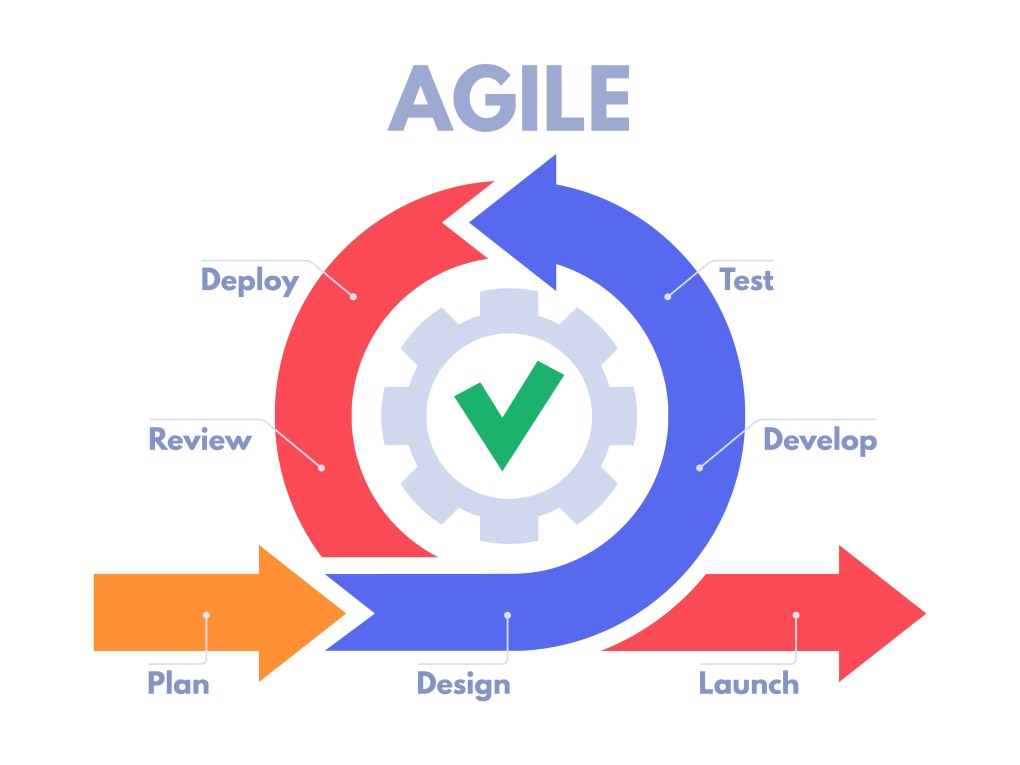Maintaining requirements is an important part of agile development. But it can be difficult to do effectively, especially on a team that is always in flux. There are a few things that you can do to make sure your requirements stay up-to-date and accurate. In this post, we’ll discuss some of those strategies. We’ll also look at some tools and techniques that you can use to help manage your requirements.
What is Requirements Management?
Requirements management is the process of tracking, organizing, and maintaining the requirements of a project. This includes both the functional and non-functional requirements. It’s important to keep track of requirements to ensure that your project stays on track and meets all the necessary objectives. If you don’t properly manage your requirements, it can lead to scope creep, which can ultimately cause your project to fail.
The agile development process is based on the principle of constant change. This means that requirements are always changing and evolving. As a result, it can be difficult to maintain a consistent set of requirements.
The Importance of Maintaining Requirements
Following are a few reasons why it’s important to maintain requirements:
Ensure that your project stays on track
The product owner and stakeholders agree on the project’s requirements at the beginning of the project. As the project progresses, it’s important to ensure that new features or changes don’t deviate from the original goals. Maintaining requirements helps the agile team stay focused on what’s important. As the agile teams maintain close communication with the product owner and stakeholders, they can easily get feedback and ensure that the project is still aligned with the original goals. If you don’t maintain requirements, it’s easy for the project to get off track.
Avoid scope creep
Scope creep occurs when the project’s scope gradually starts to expand. This can happen when new features or changes are added without updating the requirements. When requirements change, it’s important to update the product backlog so everyone is on the same page. Otherwise, you run the risk of scope creep, which can cause the project to become overloaded and bogged down. The team member maintains the product backlog, a list of all the features and changes that need to be implemented. The product owner prioritizes the items on the product backlog, and the team selects items from the product backlog to work on in each sprint.
Keep your project organized
If you don’t maintain requirements, it’s easy for the project to become disorganized. When requirements change, it’s important to update the product backlog and ensure everyone is on the same page. This helps the team stay organized and prevents confusion. Suppose, for example, that the product owner decides to add a new feature to the product. If this change is not reflected in the product backlog, the development team may not be aware of it and will not be able to implement it. Agile teams use various tools and techniques to maintain requirements, including product backlogs, sprint backlogs, user stories, and acceptance criteria.
Do you want to make sure your agile team stay on track and maintain requirements?
Contact Growth Hackers
Improve communication between the team members
When all the team members know the requirements, they can communicate better. This way, everyone is on the same page and knows what needs to be done. Like this, the chances for errors and misunderstanding are reduced. As the entire team is aware of the requirements, they can contribute to their refinement. The requirements might change as the agile framework progresses, and everyone must be updated on these changes.
Save time and money
If the requirements are unclear from the start, it can lead to much rework further down the line. By taking the time to establish what is needed from the beginning, you can avoid having to go back and make changes later on. Even if it takes a bit more time upfront, it will save you time and money in the long run. When changes need to be made, they will be easier and cheaper to implement if the requirements are well-defined. As the project team, you can also avoid scope creep by clarifying what is included in the project and what is not.
Avoid problems during the testing phase
Many software projects run into problems during the testing phase. This is often because the requirements were not properly defined from the start. You can avoid these problems by taking the time to establish what is needed. Testing will be more effective and efficient if the requirements are clear. Plus, user stories and scenarios can be created, which will help to ensure that all the necessary functionality is included.
Make sure that the right product is built
If the requirements are not well-defined, there is a risk that the wrong product will be built. This can lead to frustration from users, stakeholders, and the team. It can also cause the project to fail. You can avoid this problem by taking the time to establish what is needed. You will be able to ensure that the right product is built and that everyone is happy with the result.
Get feedback from users early on
If you wait until the project’s end to get users’ feedback, it may be too late to make changes. By getting feedback early on, you can ensure that the product meets their needs. This is an important part of agile development and can help to improve the chances of success. If an agile environment is impossible, you can still get feedback during the requirements gathering phase. This will help ensure that the product meets the users’ needs.
How Does an Agile Team Maintain Requirements?
There are several ways in which an agile team can maintain requirements by following the agile manifesto best practices. These include:
Continuous communication
When it comes to requirements, communication is key. The agile team should ensure that they are constantly communicating with all stakeholders to ensure that everyone is on the same page. In every project management methodology, the project manager must regularly communicate with the client or sponsor. The agile team should do the same to ensure that they are aware of any changes or updates that need to be made to the requirements. Even if there are no changes, it is important to keep the lines of communication open in case anything arises. Like most things in agile, requirements are constantly evolving and changing, so it is important to be prepared for anything.
Use of user stories
One of the most popular ways to maintain requirements in an agile environment is through user stories. User stories help capture the requirements from the user’s or customer’s perspective. This is a very powerful tool as it helps to ensure that the requirements meet the user’s needs. User stories can be used throughout the agile process, from the initial planning to testing and deployment. Even if a user story changes or is updated, it is still possible to trace back to the original requirement and understand why the change was made.
Prioritization
Another important aspect of maintaining requirements in an agile environment is prioritization. Since agile teams work in sprints, it is important to prioritize the requirements so that the most important ones are addressed first. This can be done through the use of story points or other methods. Prioritization helps to ensure that the team is working on the most important requirements and that less important ones can be put on hold if necessary. As a product owner, you must ensure that the requirements are properly prioritized. If you are not sure how to prioritize the requirements, you can ask the team for their input.
How to have your agile team maintain requirements?
Documentation
Documentation is also important for maintaining requirements in an agile environment. Although agile teams do not typically produce extensive documentation, it is still important to document the requirements so that they can be easily referenced in the future. The product owner is responsible for ensuring that the requirements are properly documented. The team should also be involved in the documentation process to provide input on what should be included. The project managers should also review the documentation to ensure that it is complete and accurate.
Change Control
Change control is another important aspect of maintaining requirements in an agile environment. Since agile teams work in sprints, it is important to have a process to track and manage changes that come up during the sprint. Otherwise, keeping track of what needs to be changed and when can lead to confusion and errors can be difficult.
There are several ways to approach change control in an agile team. One common method is to use a tool called a task board. This physical or digital board lists all the tasks that need to be completed in a sprint. As changes come up, they can be added to the task board so that everyone knows them. This can help ensure that changes are made promptly and organized.
Another method for change control is to use a change log tool. This is a document that lists all of the changes that have been made to the project requirements. This can help keep track of what has been changed and when, as well as who made the change. Change logs can also help provide context when reviewing changes.
Retrospectives
Retrospectives are another important tool for maintaining requirements in an agile environment. Retrospectives are meetings at the end of each sprint, where the team reflects on what went well and what could be improved. This is a good time to discuss any changes that need to be made to the requirements and any other areas of the project that need to be addressed. The different personal backlog items can also be reviewed during the retrospective so that everyone is on the same page.
No matter what methods you use to maintain requirements in an agile environment, it is important to be consistent and organized. This will help ensure that the team is always aware of the latest changes and can easily reference the requirements when needed.
Final Words on How an Agile Team Maintain Requirements
I strongly believe that most companies should incorporate agile methodology into their initiatives. The key to maintaining requirements in an agile environment is communication and collaboration. The product owner, team, and project managers must be involved in the process so everyone is on the same page. Tools like task boards and change logs can also help keep track of changes and ensure that they are made promptly.
At last, it is important to be consistent and organized when maintaining requirements. This will help ensure that the team is always aware of the latest changes and can easily reference the requirements when needed. So if you want to know how an agile team maintain requirements, remember these key points.
Growth Hackers is a certified product marketing agency helping businesses from all over the world grow. There is no fluff with Growth Hackers. We help entrepreneurs and business owners to successfully implement agile requirements management, increase their productivity, generate qualified leads, optimize their conversion rate, gather and analyze data analytics, acquire and retain users and increase sales. We go further than brand awareness and exposure. We make sure that the strategies we implement move the needle so your business grow, strive and succeed. If you too want your business to reach new heights, contact Growth Hackers today so we can discuss about your brand and create a custom growth plan for you. You’re just one click away to skyrocket your business.








